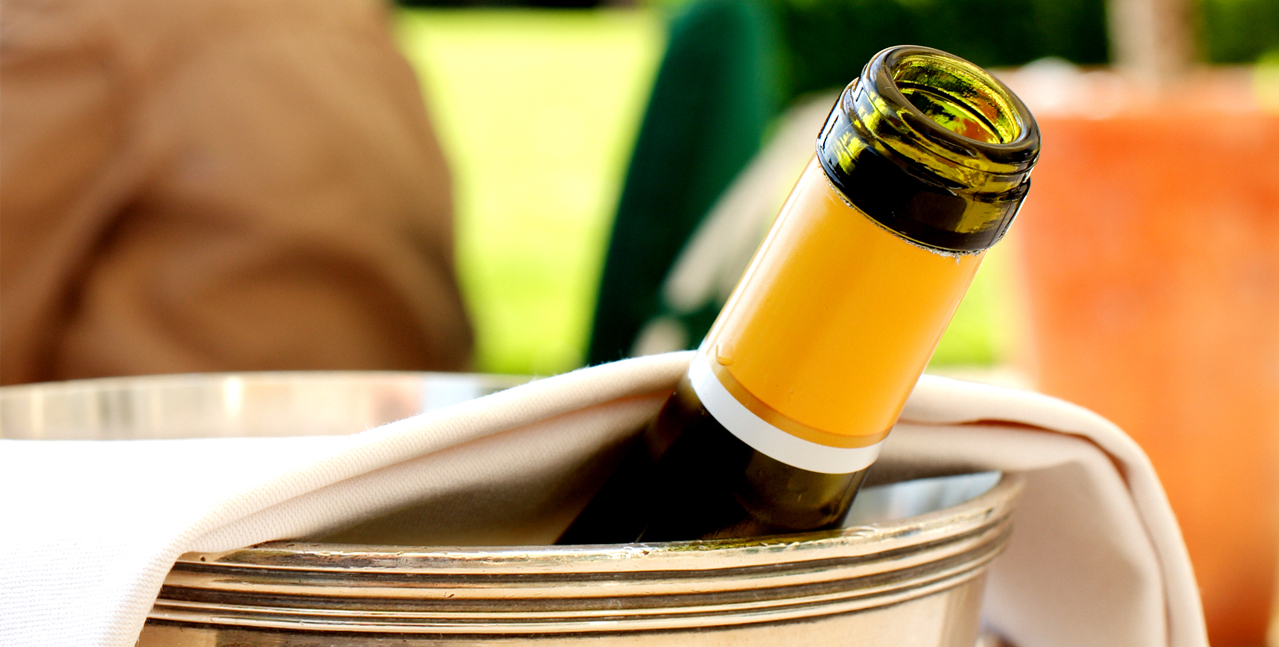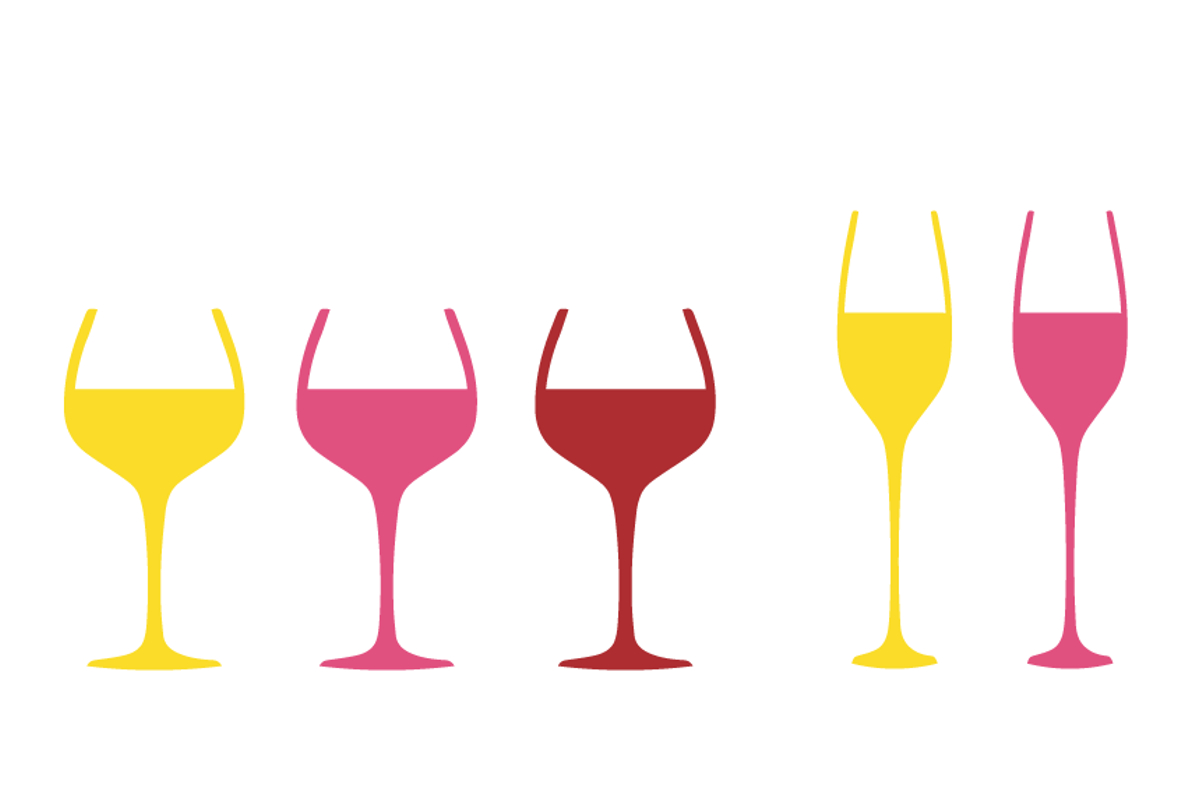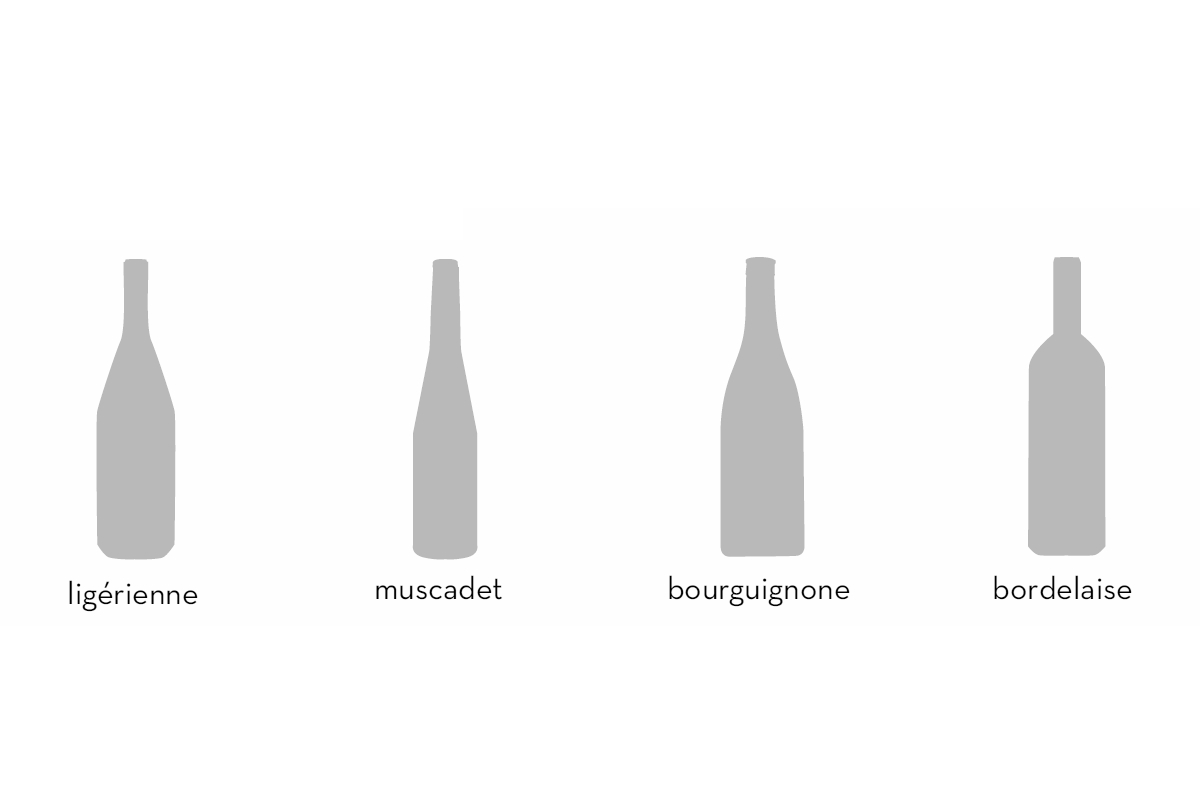
Tips for advanced tasters
Some tips to enhance your tasting : Choose the appropriate glass, understand the benefit of the cork, recognize the different bottles of the Loire Valley wines.

Choose the right glass
Your glass is crucial to bringing your wine and your tasting ability together.
The type of glass - its shape and size - will have a major influence on the way you perceive your wine. The shape of the glass can impact not only the aromas in your wine, but can also affect flavour and texture. Try tasting the same Loire wine from a range of different glasses – the results may surprise you.
Your choice of glass is important for a number of reasons:
- The glass should be transparent, so you can see the colour of the wine ;
- The glass should be fine in texture, not too thick, especially at the rim, so it does not overpower when in contact with the lips ;
- It should have a stem to separate the base from the bowl of the glass. Holding the glass by its stem will avoid warming the wine, and also prevent finger-marks which may interfere with enjoying the colour of the wine;
- The most suitable glasses are those with a tulip shape which tapers towards the top, channelling the aromas towards the nose.
The ideal glass is tulip-shaped, has a stem and is made from fine, transparent crystal. It has smooth, plain walls and no embellishments or engravings. The minimum size should be 25cl.
The INAO standard tasting glass (used by tasters worldwide) would be ideal for any table.
Flutes should be used for sparkling wines; they give full expression to the wine’s bead, highlighting both the string of bubbles and the creamy mousse.
After washing, it is advisable to store the glasses upside down to avoid residual odours from washing up detergent or of cardboard from closed boxes.
Why use corks?
Different sizes of cork can be used, depending on the wine in the bottle and its predicted aging time. Corks are made from the bark of the cork oak tree, and are used to preserve the quality of the bottle contents for as long as possible.
Like wine, cork is a living, natural material, and again like wine, it can be unpredictable; the winemaker’s job is to try and manage both these natural materials. Cork is the ideal medium to use as a wine stopper. It makes a tight seal against the smooth walls of the bottle, but still allows a modicum of air in from the outside, allowing the wine to age slowly, improving as it does so.
Given the limited amount of cork available and the taint problems it can cause the wine, silicon or screw-cap closures are becoming widespread. This kind of stopper is perfect for a simple wine made to be drunk young. For wines with a longer aging potential, cork stoppers are still essential.
The controlled humidity of the wine cellar helps to preserve the cork, and thus the wine.
It should be noted that ‘cork taint’ which can cause such disappointment on opening a bottle, is not always the fault of the cork, but can also stem from poor storage conditions.

Wine bottle shapes and formats
Loire wine bottles come in many sizes, each having its own name:
- Fillette : 37.5 cl
- Bottle : 75 cl
- Magnum : 1.5 L (2 bottles)
- Jeroboam : 3 L (4 bottles)
- Rehoboam: 4.5 L (6 bottles)
- Methuselah: 6 L (8 bottles)
- Salmanazar: 9 L (12 bottles)
- Balthazar: 12 L (16 bottles)
- Nebuchadnezzar: 15 L (20 bottles)
- Solomon: 18 L (24 bottles)
- Melchizedek: 30 L (40 bottles)
- Bordeaux Barrel: 225 L / Burgundy Barrel: 228 L
- 1/2 Cask: 300 L
- Cask: 600 L

Recognising bottles from the Loire Valley
Your bottle may have a distinctive shape, depending on the region where your wine was made.
The full range of Loire wines comes in only three styles of bottle:
- The Ligérienne: The traditional Loire bottle shape: similar to the Burgundy bottle, but with somewhat finer lines.
- The Muscadet Bottle: Used mainly by producers of Muscadet sur Lie; fine and elegant.
- The Burgundy Bottle: Prevalent in Burgundy and sometimes used in the Loire Valley.
- The Bordeaux Bottle: the most commonly used bottle shape worldwide but rarely used in the Loire Valley – although some rosés and Loire Valley PGI wines may choose this type of bottle.




